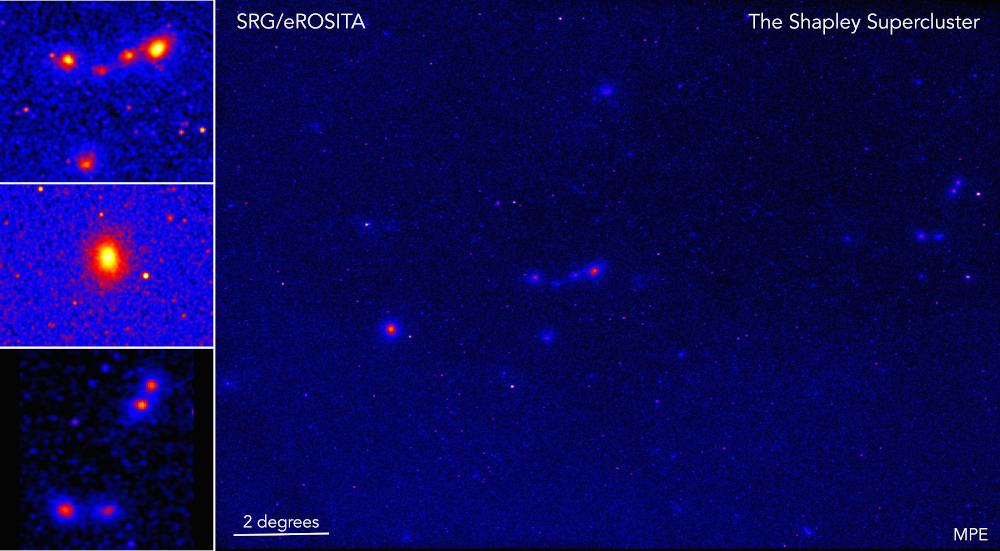
 Credit: Esra Bulbul, Jeremy Sanders (MPE)
Credit: Esra Bulbul, Jeremy Sanders (MPE)
Monads of the Universe
Galaxies, like our own Milky Way, are large objects held together by gravity, composed of hundreds of millions to billions of stars. Clusters of galaxies are even larger gravitationally-bound objects consisting of hundreds to thousands of galaxies. And superclusters of galaxies (like our own Laniakea supercluster) are the largest gravitational objects we know, consisting of dozens of galaxy clusters. And the Universe is so large that even superclusters of galaxies can be thought of as the fundamental building blocks holding together the cosmic web of matter. The constant sloshing of galaxies and clusters in their gravitational well produces frictional heating of the gas in between, raising the temperature to millions of degrees so that this gas glows in X-ray light. High-energy emission belched out from insatiable supermassive black holes at the centers of many of the member galaxies also produces strong X-radiation. The image above shows an X-ray image obtained by the eROSITA X-ray telescope of the Shapley supercluster (named for famed astronomer and great debater
Harlow Shapley), which, at a distance of 650 million light-years, is one of the most massive concentrations of galaxies in the local universe. The sensitivity and large field of view of eROSITA make it an ideal instrument for the study of superclusters. On the left, images highlight the most massive clusters in the Shapley supercluster - each glowing blob represents the X-ray emission from one of the clusters of galaxies in the supercluster. X-ray studies of superclusters are one of eROSITA's prime science tasks, and may one day help unravel the mysterious Dark Energy driving the Universe apart.
Published: August 10, 2020
<
HEA Dictionary ● Archive
● Search HEAPOW
● Other Languages
● HEAPOW on Facebook
● Download all Images
● Education ● HEAD
>

Each week the HEASARC
brings you new, exciting and beautiful images from X-ray and Gamma ray
astronomy. Check back each week and be sure to check out the HEAPOW archive!
Page Author: Dr. Michael F. Corcoran
Last modified Monday, 26-Feb-2024 17:36:41 EST


